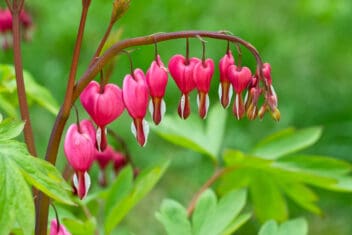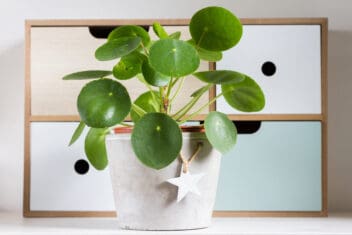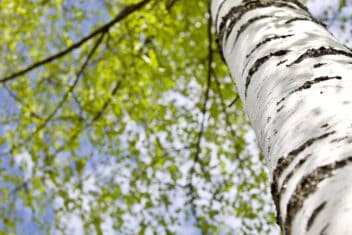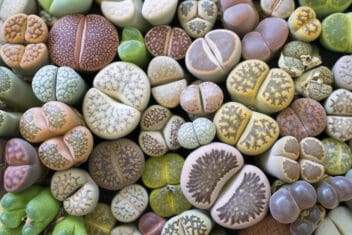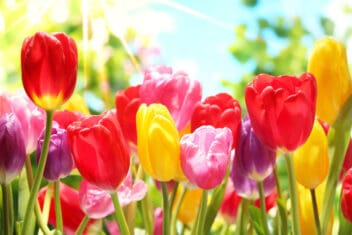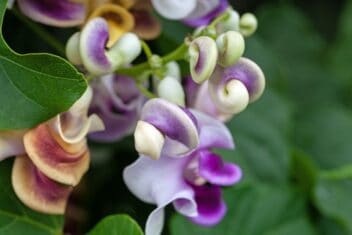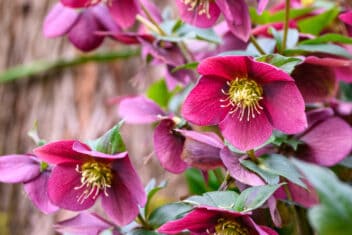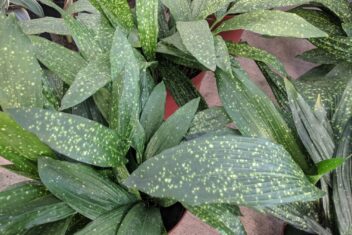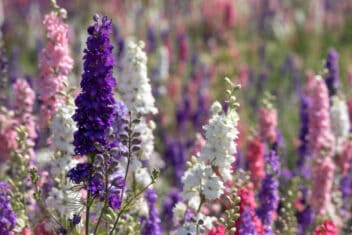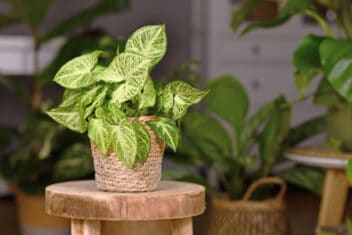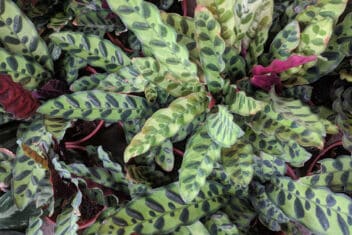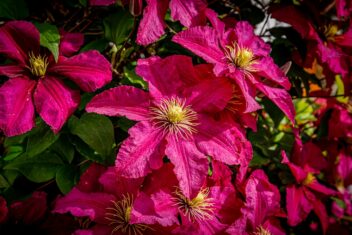Some flowers are just classics. Daffodils are one such flower, and for good reason. Daffodils in bloom signal the warming of the Earth and the coming growing season.
Daffodils add cheerful color to a time when many other plants are still dormant or just starting to awaken. They are super-easy to grow, and you often find them naturalized and blooming all on their own.
Suitable in so many settings, daffodils are a gardener’s best friend. From meadows to gardens and borders, containers or cut flowers, you won’t be disappointed with this wonderful perennial.
What Are Daffodils?
Daffodils (Narcissus spp.) are tough perennials that come back year after year without fail. They grow in USDA Growing Zones 3 to 9.
They are found in many countries around the world and were written about by Greek botanists and philosophers. The Romans took daffodils to England, and they spread around the world from there, as well as from other countries that have native varieties.
Daffodils are found in all manner of habitats, and unlike some classics, they won’t cost a fortune to buy and establish in your garden.
Best Cultivars and Hybrids of Daffodils
There are thousands of cultivars to choose from, with new ones coming out all the time. But there are also some classics worth checking out. If you see a hybrid or cultivar in your area that you love, find out what it is and see if you can get a bulb or two.
Since there are always new ones coming on the market, it’s fun to experiment with growing a few new daffodil types now and then to see how they do in your yard.
While yellow is the most famous color, there are lots of other options out there.
Blushing Lady
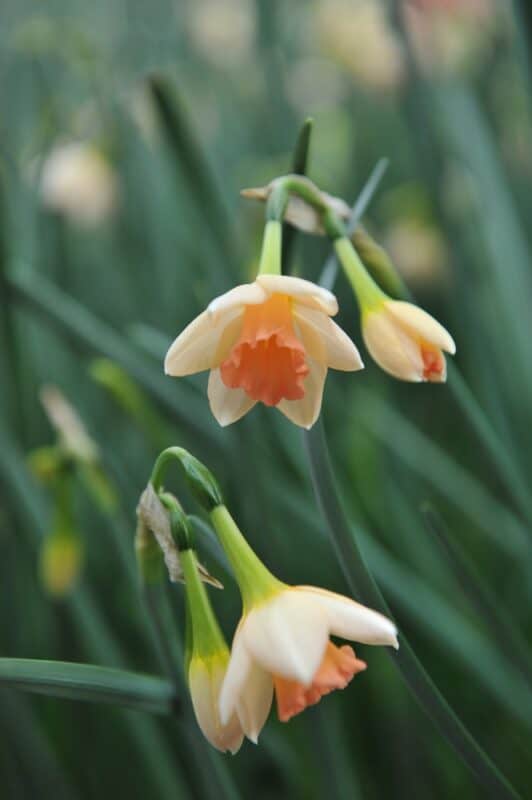
This hybrid originated in the US. The bloom is a combination of yellow flowers with a salmon-pink cup. Two of the great things about this cultivar are the fragrance and the 12-inch stem that makes it perfect for cutting.
This one isn’t as cold-hardy as others and should only be grown in Zones 4-9.
British Gamble
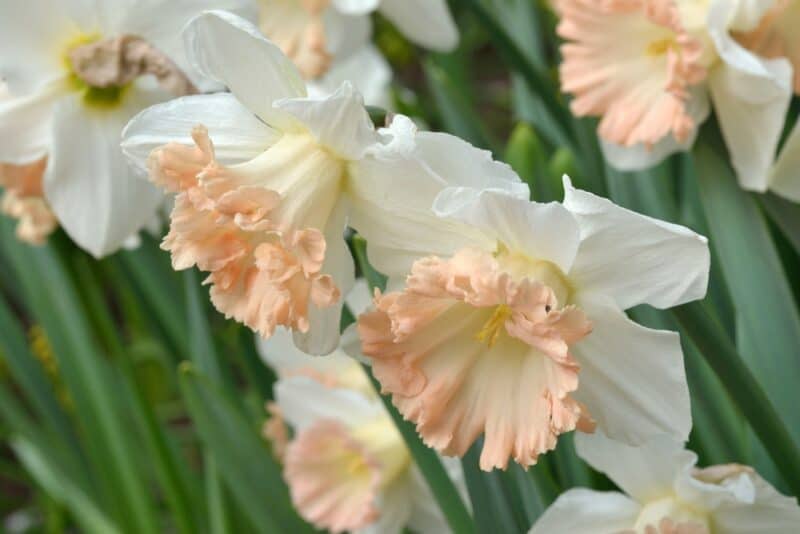
Originally from the Netherlands, ‘British Gamble’ has some of the largest blossoms, measuring up to six inches across the flower face.
With white petals, an orange center, and a height of up to 24 inches, you can bet that they suit flower arrangements perfectly or are equally as stunning in the garden.
Dutch Master

With ‘Dutch Master,’ a frilly yellow center is surrounded by vibrant yellow petals on a stem up to 26 inches or more. This cultivar is perfect for naturalizing large or small areas. Hardy all the way down to Zone 2. Plus, you can nab a pack of 50 for a song.
If you’re looking at growing traditional-looking daffodils, this is a great option.
Mount Hood
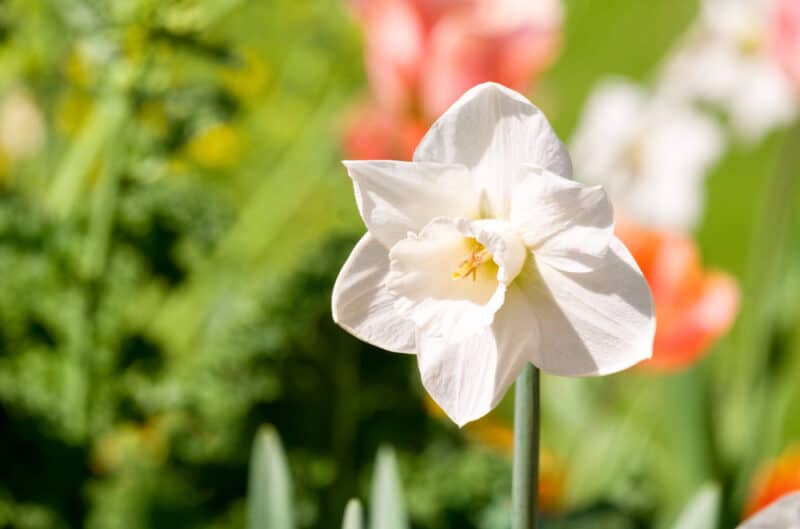
‘Mount Hood’ is an heirloom cultivar well worth trying, and it’s easy to see why it’s one of the most popular white daffodils out there. It blooms slightly later than others, sending out blossoms in mid-spring, but its snow-white flowers on 18-inch stems contrast nicely with other bright spring colors.
This adaptable daffodil is happy growing in Zones 2-9.
Regeneration
This hybrid is an early bloomer, blossoming right at the beginning of spring. It has yellow petals with a creamy center on stems up to 26 inches tall, and three to five flower heads per stem.
Geranium
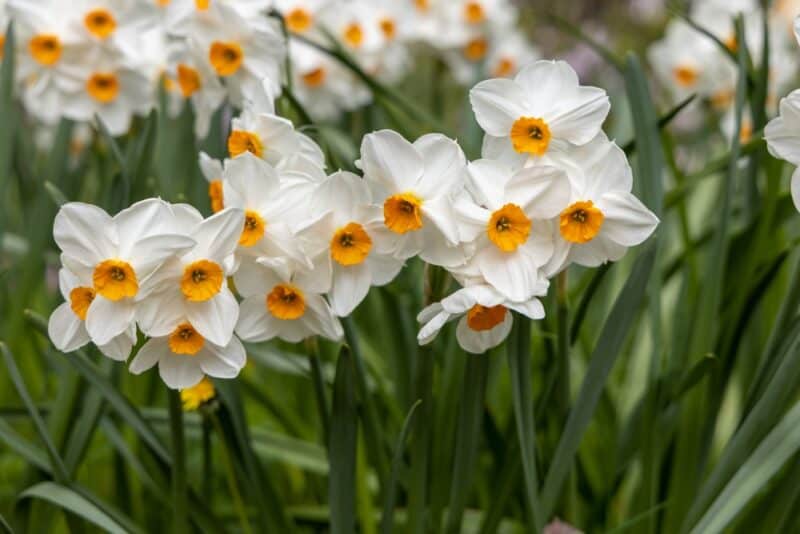
Another heirloom cultivar, ‘Geranium,’ with its bright orange center and white outer petals, suits any environment that can use a hint of color. The stem grows up to 18 inches tall, and the fragrance is stunning, which is why you often see it planted near doorways.
We really could go on and on talking about all the different daffodils you can try growing, so experiment and play around to see what you like best.
How to Propagate Daffodils
The simplest way to propagate daffodils is through dividing bulbs, but you can try growing from seed.
Seeds
Although this method works with heirloom cultivars, hybrids may either be sterile or won’t grow true to type. This is true of most hybrids. You can always try it with any hybrid to see if you are successful, but the resulting flower will likely differ from the parent plant.
Each flower forms a seed pod when it finishes blooming, provided pollinators have visited the flowers. You can collect the seed pods as soon as they dry out. Each pod contains up to 12 hard, black seeds.
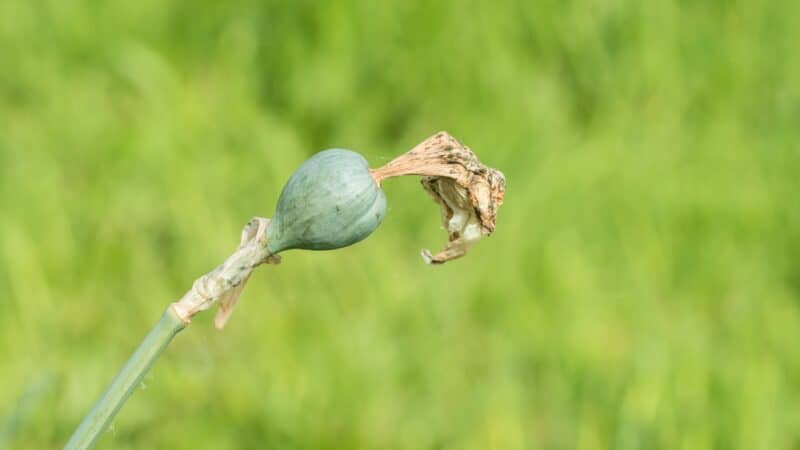
Gently shake the pod. You should hear the seeds rattling around inside.
Once you’ve collected the seeds, they must be planted inside for up to a year.
- Using a tray or smaller pots, fill them with good-quality potting soil.
- Place the seeds about two inches apart and cover them with 1/2 an inch of soil.
- Place the seeds tray or containers in an area where they get four to six hours of direct sunlight a day.
- Mist the soil each day with water.
- When the seeds germinate, they look like little onion seedlings.
- Once the bulblets under the soil are almost touching, carefully transplant them into bigger containers, or fewer plants per container.
- Plant outside at the beginning of spring when there will be no more frost.
- It takes up to five years before these seedlings are mature enough to bloom, and by then, the bulb is well formed.
Dividing Daffodil Bulbs
Happy daffodils have bulbs that multiply under the surface over the growing seasons. You can divide the excess bulbs away from the mother bulb and replant them to start new plants.
Do this every three to five years in the late spring or early summer. You can leave the daffodils on their own to spread, but they tend to clump too tightly, and sometimes the quality of the bloom suffers.
- Using a broad, flat spade, dig the whole bulb group up and remove it from the ground.
- Do this when the foliage has either died back or is nearly dead. You need to give the plant time to store energy in the bulb for next year, and if you remove the leaves too early it can’t store enough food from them.
- Gently shake and remove the dirt so you can see the cluster clearly.
- Pull the bulb sections apart. It’s obvious where the sections separate.
- If any are resistant to pull away, they may not be ready, so leave those with the mother bulb.
- Plant the bulbs straight away.
- If there is a little greenery still attached to the bulb, cut it back before replanting.
Planting Bulbs
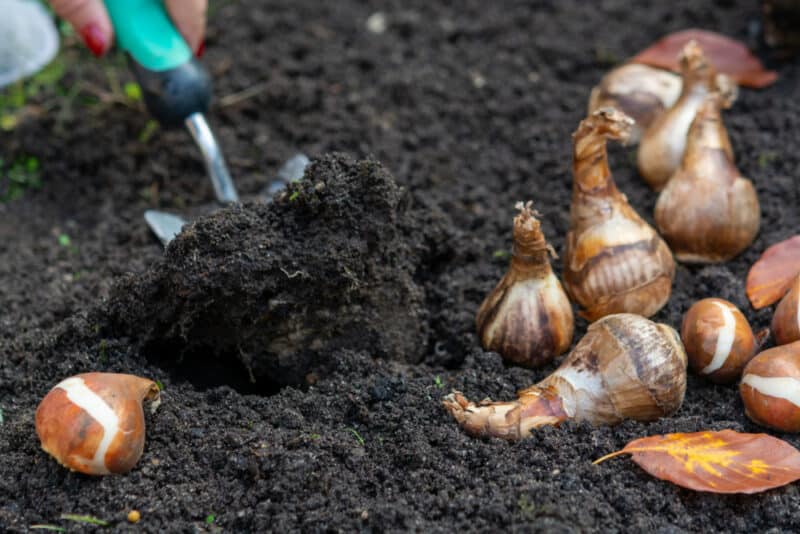
Whether you buy them or divide them off from another plant, planting daffodil bulbs is pretty straightforward.
Plant them in loose, loamy, rich, well-draining soil with a pH between 6.0-7.0. If you need to amend your soil to bring it up to par, use some well-rotted compost.
They are not fussy regarding soil type, but it must be free draining for daffodils to be healthy. Waterlogged soil will cause the bulb to rot.
Plant them in the fall at least two to four weeks before the ground freezes. Bulbs should be planted about two to three times as deep as the bulb is long, with the pointy end facing up. In frigid areas, mulch the soil to provide some warmth.
How to Care For Daffodils
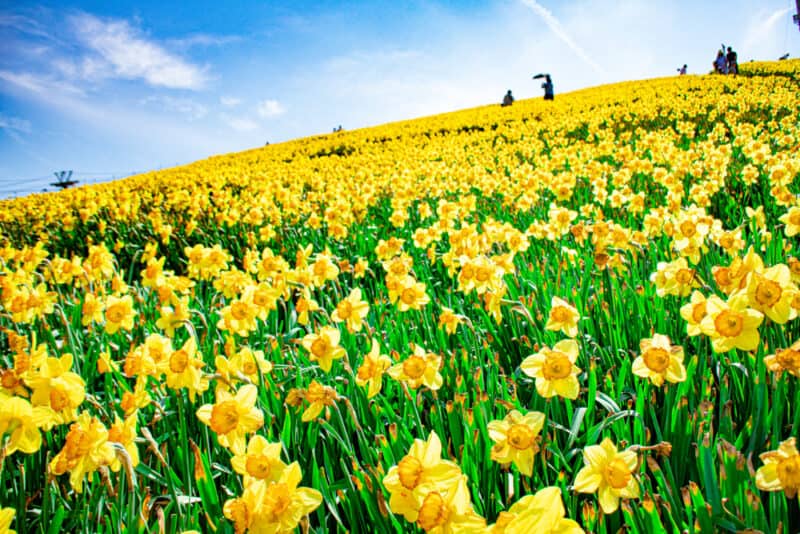
Daffodils need to be growing in full sun or only slightly partial shade.
Daffodils need a lot of water, so keep an eye on the soil, especially in dry weather. Add water anytime the soil feels dry to your first knuckle. Once the plant fades in the late spring, you can reduce watering slightly. Don’t water at all after the plant has died back entirely.
If the bulbs are strong and healthy, they won’t usually need fertilizing. If your soil is nutrient-poor and it looks like the plant needs it, use a bulb food in early spring and again when the flowers first appear.
As the flower dies away and the seed head forms, remove the head if you don’t want to produce seeds, but leave the stem until it dies away. This is to ensure the bulb receives as much energy as possible.
Grow Daffodils in Containers Inside
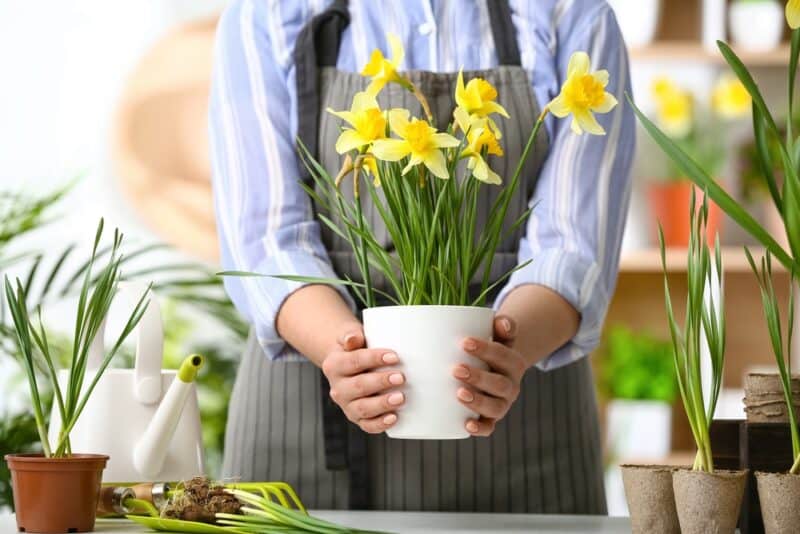
Daffodils grow well in containers and are even lovely growing inside to provide some color. You just need to provide the bulbs with a chill period like the ones outside in winter get each year.
- Use at least a two-gallon container and a good-quality potting mix. Fill to 3/4 full.
- Place the bulbs in so they are close, but not touching. Cover with potting mix.
- Place this container in a cool dark area where the temperature doesn’t exceed 45ºF. Leave it there for 12 to 16 weeks.
- Water when the soil becomes dry to the touch. (If you live in a cold area and the outside temperature suits, place the container outside under cover.
- When the shoots emerge from the soil, move the container to an area with sun, but where the temperature doesn’t exceed 60ºF.
- When the shoots are green, move the container to its final inside location where there is sunshine and a temperature of around 70ºF.
For daffodils in containers outside, they can stay where they are as long as there isn’t too much rain over the winter so that the roots dry.
Mulch if you get snow or long, hard frosts.
Best Companion Plants For Daffodils
Try the following companions:
- Azaleas
- Rhododendrons
- Forsythia
- Daylilies
- Tulips
Don’t plant with:
- Beech
- Dogwood
- Maple
Although daffodils look wonderful under many trees, make sure it’s not trees with a lot of root structures close to the surface where the daffodils will be.
Problems and Solutions For Growing Daffodils
Once in a while, your daffodils won’t look like they should. Here are some causes:
No Blossoms
If your daffodils grow a lot of stems but fail to bloom it is likely a lack of nutrients. This could be because of poor soil or because the bulb cluster is too big and needs to be divided. The depth of the planted bulb may be too shallow as well.
Lack of light is also a big cause of a lack of blossoms, as can bulb rot.
Dig the bulb up and replant it somewhere better at a depth two times the length of the bulb. Dig in well-rotted compost to feed the soil.
Bulb Rot
If the stems or flowers are yellow and wilted, you may have bulbs that are rotting. Dig them up and dispose of them in the garbage if they are. Sadly, by the time the above-ground parts of the plant show symptoms, it usually means that the bulb is heavily infected.
Basal rot, as it’s known, is caused by the fungus Fusarium oxysporum f. sp. narcissi.
This is common in bulbs sitting in soils that don’t drain well because the fungus needs water to spread.
Planting daffodils on a slope to improve drainage is a good solution for those with heavy soil, but keep an eye out to ensure the soil isn’t drying out too much. Narcissus tazetta cultivars are resistant.
While it’s possible to use fungicides to treat the problem, they usually don’t work well.
Aphids
Aphids will attack daffodils and cause them to struggle if the aphid numbers are high. Read our article on aphids and how to identify and control them here.
Small Narcissus Fly
The maggots of this fly (Merodon equestris) lay egg clusters that infect bulbs. The adult lays an egg at the base of the leaves in late spring or early summer.
Within days a larva emerges which enters and feeds on the bulb.
Regular sprays of the garden with organic neem oil keeps most insects away over time.
Daffodil Uses
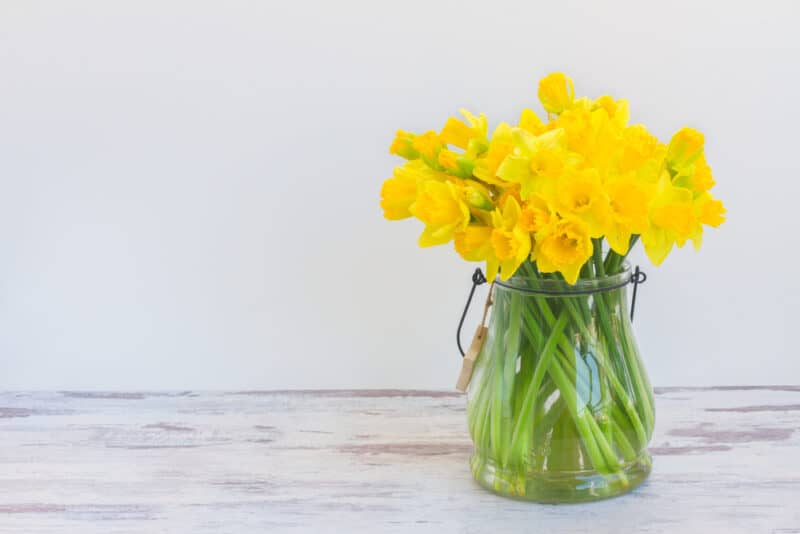
There are lots of ways to use daffodils, from cut flower arrangements to large mass planting. Or mix them in amongst other spring bulbs for a more natural look.
If you cut the flowers, wait until they’re partially opened and then snip them off right at the base with a clean pair of scissors. Put them in water right away.

